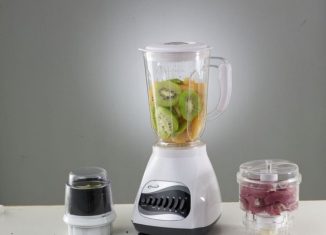
One of the modern home’s essential appliances is the blender. The equipment allows you to prepare a myriad of food options that you and your household can enjoy. In today’s healthy diet of smoothies and liquified food products, it helps make those gourmet foods a whole lot enjoyable and convenient to prepare. However, with so many of them flooding the market, it can be downright confusing to choose the best one. So, here are some of the things that you might want to consider when you’re buying your first or next blender:
What Type Do You Need?
Considering your needs or preferences, you’ll have to pick out a type of blender that will meet your expectations. Here are some of the types of blenders and their features:
- Countertop
This is your basic, garden-variety blender that you’ll find in most kitchens of a regular home. It is versatile as well as powerful enough to accommodate any number of products you’ll want to whip up. They are less powerful than performance blenders, hence less expensive, but are more powerful than immersion types that is why you’ll see a lot of them.
- Personal
A personal blender can look like a countertop type but it is designed to churn out single servings – hence personal. They have decent power but are not a suitable substitute for a countertop if you have extensive cooking needs. However, they are the best type of blender for travel, since many of them are portable and their containers or cups are designed for drinking as well. Most of them have limited speeds so it’s important that you read up on reviews and descriptions for your personal needs.
- Immersion
This blender has become more popular to complement your countertop blenders with some tasks that are more suited to this type. You may think that you won’t need one until you get one for yourself, you’ll find them as a useful tool in your kitchen. It’s a handheld tool that will pulse, emulsify, or work right within a pot of stew that you would like to puree. It gives you the flexibility that you get from a blender or any other processor. It doesn’t have that power from regular benders but they can be cordless with rechargeable batteries which makes them easy to use.
- High-Performance
A High-performance blender is a perfect investment for those people who put heavy mileage on their blenders, making lots of smoothies, peanut butter, and soups. Yes, it can process both hard and soft ingredients with ease. They’re usually pricey but it is a worthy investment if you spend a lot of time working with them. Since they’re expensive with prices ranging from $500 to over $700, you may want to do your research, especially on their warranty.
Different Features
You may want to check out some of the features that come with the type or model of blender you’re looking to buy. Here are some things that you don’t want to overlook:
- Power
Many people are concerned about having too much power for their blender. It’s not really that difficult to address that question, you’ll just have to take a look into the most susceptible ingredients that you’ll put into your blender. Most fruits don’t require a lot of power to liquefy or puree, however, if you have a type that only caters to those soft ingredients then you’ll best avoid putting nuts into them.
300 watts is decent enough to make a variety of blending products including the chopping of many ingredients, save the hardest ones.
500 to 700 watts of power provides you with more versatility. It can process soups and other ingredients liquefying them with general ease. Beyond 700 watts allows you to make butter as well as increases your capacity to make more servings of the harder ingredients. This is great for commercial purposes or if you have a lot of guests coming over.
- Jug or Jar
Aside from the power, container capacity is also an important factor to look into. Even for personal blenders, you may want to look for a jug or a bottle that affords you more servings in one blend. Most high-end models come in with a jar made of glass, while the less expensive ones come in plastic. For jars, choose the one with a spout on the other side of the handle to avoid spills.
- Blades
Manufacturers have their own design and principle in their choice of blades. Their design can tell if they’re better at masticating foods or pulverizing harder components. But the important thing is that they must be made from stainless steel and are resistant to corrosion.
Noise
Sadly, with all the advancements of technology, they haven’t made a blender that doesn’t make you raise your voice when you’re talking over it. However, some high-performance blenders, which revs the most rpm than all of the other types, are made up of quality materials that dampen the noise. But if you’re not still satisfied, a sealed plastic box works too.
There you have it, knowing the types, features, and other accessories of a blender, you’ll be able to narrow down your search by matching them with your needs. Lastly, after you’ve chosen and bought one, remember to read the instructions on how to use them and more importantly how to maintain them.
